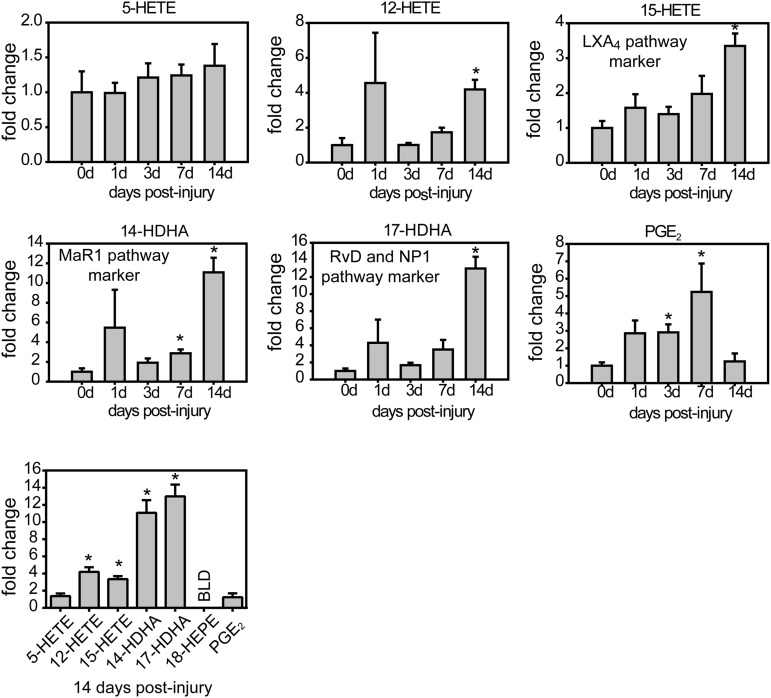Figure 2.
Impaired and delayed synthesis of proresolving lipid mediators after SCI. Resolution metabolome profiles after SCI were analyzed using LC-MS/MS of whole spinal cord lysates. Proinflammatory eicosanoid profiles indicated by PGE2 levels follow closely the formation of inflammation, with an early increase at day 1, increasing to peak at day 7, followed by a drop until day 14. This time point marks a switch in the lipid mediator biosynthesis profile demarcated by starting increase of the proresolution pathways. Both MaR1 and RvD synthesis commences not before 2 weeks after SCI as indicated by a 10- to 13-fold increase of the pathway markers such as 14-HDHA (MaR1) or 17-HDHA (RvD and NP1). This is further matched by the weak and late induction of 5-HETE, 12-HETE, and 15-HETE, which are indicative of the biosynthesis of the SPM LA4. Note that at 14 dpi, proresolving pathways are increased significantly in the injured spinal cord, with the exception of RvE, the levels of which were below the limit of detection (BLD). Conversely, the levels of the proinflammatory eicosanoid PGE2 were not increased at this time point. *p < 0.05 versus uninjured spinal cords (0 d). One-way ANOVA with Bonferroni's post hoc correction (n = 4 per point). Error bars indicate SEM.

